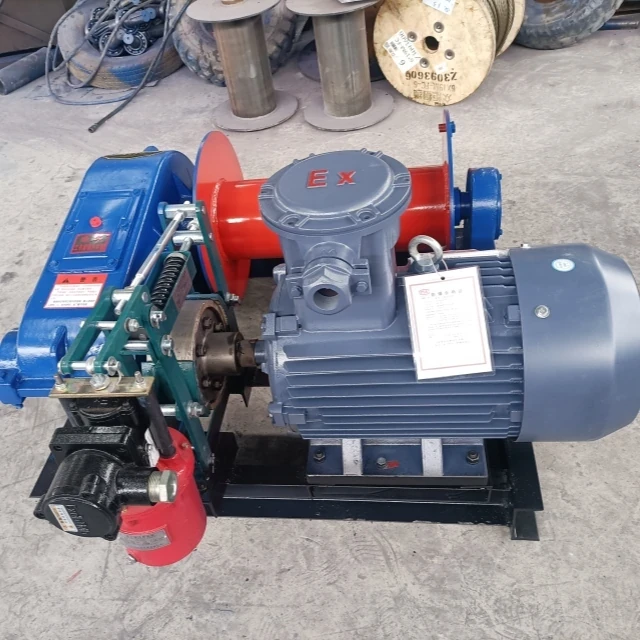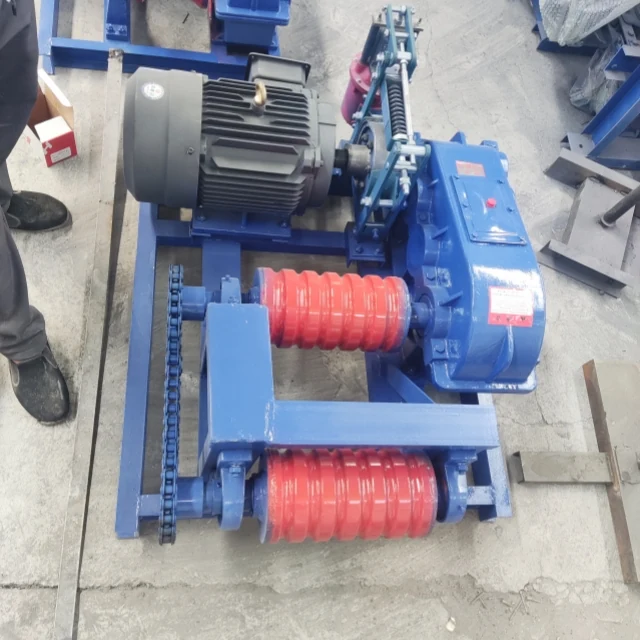Selecting the right winch isn’t just about pulling power—it’s about matching the drive mechanism to your operational demands. Whether you’re lifting construction materials, towing heavy loads, or working in explosive environments, the wrong choice can lead to inefficiency, safety risks, or costly downtime. This guide demystifies winch types by driving method, their ideal applications, and key selection criteria to ensure optimal performance.
Types of Winches by Driving Mechanism
Manual Winches: Best for Low-Frequency, Light-Duty Scenarios
Manual winches are the simplest and most cost-effective option, relying on hand cranks or levers to operate. They excel in scenarios where power sources are unavailable or operations are infrequent.
Ideal for:
- Small-scale tasks like hauling boats onto trailers
- Emergency backups in remote locations
- Budget-conscious projects with loads under 2 tons
Limitations:
- Labor-intensive for repeated use
- Unsuitable for heavy or continuous loads
Ever wondered how manual winches compare to powered alternatives in long-term cost? While cheaper upfront, their operational inefficiency may outweigh savings for frequent use.
Electric Winches: High Efficiency in Controlled Environments
Electric winches use motors powered by batteries or grid electricity, offering a balance of power and convenience. They’re common in automotive recovery and construction sites with reliable power access.
Advantages:
- Quieter operation than hydraulic systems
- Lower maintenance (no fluid leaks or hoses)
- Precise speed control for delicate loads
Best suited for:
- Indoor workshops or urban job sites
- Applications requiring intermittent use (e.g., vehicle recovery)
Caution: Electric motors can overheat during prolonged heavy loads, making them less ideal for industrial-scale tasks.
Hydraulic Winches: Heavy-Duty Power for Industrial Demands
Hydraulic systems dominate high-torque applications, leveraging pressurized fluid to deliver unmatched strength and endurance.
Key benefits (backed by industry data):
- Consistent power output: Unlike electric winches, hydraulics maintain performance under continuous load without overheating.
- Marine-grade durability: Resistant to corrosion and submersible in water, making them ideal for offshore rigs or shipyards.
- Higher load capacity: Garlway’s hydraulic winches, for example, handle loads exceeding 50 tons, suited for mining and oilfield operations.
Trade-offs:
- Higher upfront cost and complex installation
- Requires hydraulic power source (e.g., tractor PTO)
Think of hydraulic winches as the marathon runners of heavy lifting—built for endurance, not sprints.
Pneumatic Winches: Safe Solutions for Hazardous Conditions
Pneumatic (air-powered) winches are the go-to for explosive or flammable environments where sparks from electric motors pose risks.
Critical applications:
- Oil refineries and chemical plants
- Underground mining with methane hazards
Pros:
- Intrinsically safe (no ignition risk)
- Lightweight yet powerful
Cons:
- Requires compressed air infrastructure
- Less energy-efficient than electric/hydraulic options
Key Criteria for Choosing a Winch Drive
1. Load Requirements and Operational Intensity
- Light/occasional use: Manual or electric
- Multi-shift industrial work: Hydraulic
- Hazardous environments: Pneumatic
2. Environmental Factors and Safety Considerations
- Marine/wet conditions: Hydraulic (sealed systems)
- Remote areas: Manual or portable electric
- Extreme temperatures: Hydraulic (stable performance in -40°F to 120°F)
3. Maintenance Costs and Energy Efficiency
- Lowest lifetime cost: Electric (fewer moving parts)
- Highest uptime: Hydraulic (minimal wear under load)
Conclusion: Aligning Winch Choice with Real-World Demands
Your winch should be as specialized as your job. For light tasks, manual or electric models keep costs down. When power and reliability are non-negotiable—like in construction or offshore drilling—hydraulic winches deliver. And where safety trumps all, pneumatic systems mitigate disaster risks.
Actionable tip: Audit your workload frequency, environmental conditions, and budget before deciding. Brands like Garlway offer tailored solutions across drive types, ensuring you invest in capability—not just hardware.
Final thought: In heavy industry, the wrong winch doesn’t just slow you down—it can halt operations entirely. Are you prioritizing short-term savings over long-term performance?
Related Products
- Ready Mixer Machine for Construction Ready Mix Machinery
- Electric and Hydraulic Winch for Heavy Duty Applications
- Portable Concrete Mixer Machine Equipment for Mixing Concrete
- Small Electric Winch 120V and 240V for Compact Applications
- Commercial Construction Mixer Machine for Soil Cement Mixing Concrete
Related Articles
- Optimizing Concrete Mixer Safety: How Proactive Tire and Suspension Maintenance Prevents Catastrophic Failures
- How to Choose the Right Concrete Type for Every Construction Challenge
- How to Classify and Resolve Concrete Mixer Hazards with Compliance
- How to Master Concrete Mixer Operation: Training, Certification, and Safety Protocols
- How to Conduct OSHA-Compliant Concrete Mixer Inspections: A Safety-First Checklist






















